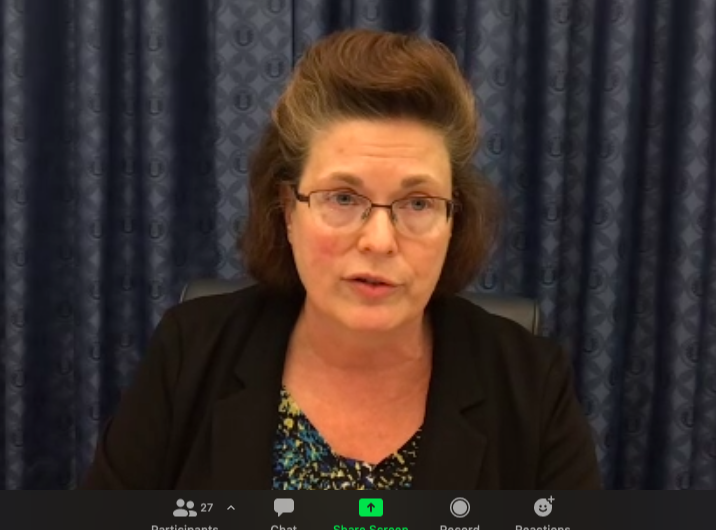
Darlene Costello
WASHINGTON: The Air Force is reassessing how to keep the momentum going for its top-priority Advanced Battle Management System (ABMS) program in the wake of congressional action last year to whack its 2021 budget request nearly in half.
“We’re literally working through those details right now to see what we can and cannot do in order to implement it,” Darlene Costello, acting Air Force acquisition head, said today in a press briefing on the margins of the (virtual) Air Force Association winter meeting.
“With a cut of that magnitude, it will have an impact” on both planned ABMS onramp experiments and the capabilities the service has been planning to buy this year, she elaborated in response to my question. “But the exact answer of how much of an effect, we don’t have that yet … We’re doing everything in our power to keep efforts going, because we believe … it’s the right way to help design our future force.”
The 2021 spending bill passed by Congress and signed by President Donald Trump Dec. 27 slashed the Air Force’s ABMS budget in half: to $159 million from the requested $302 million. The congressional report (Section D of the omnibus spending package) explains the move by citing, among other defects, “poor justification materials.”
Costello explained that the Air Force Rapid Capabilities Office (RCO) — tapped by former service acquisition czar Will Roper to manage ABMS-related programs of record — already has identified what capabilities are to be included in the program’s first set of planned buys, called “releaseONE.”
The initial ABMS package will comprise “16 or 17” separate ‘products,’ such as cloudONE and platformONE, that have been tested through the ABMS onramps — all in all making up the equivalent of “a miniature version of the Internet applied to military systems,” Roper said in his final press conference last month.
Roper signed off on the ABMS acquisition framework before he left, Costello said, and the service is now working on a specific acquisition strategy for releaseONE. “Each capability release, as it’s defined, will have its own acquisition strategy document,” she said. “That’s our methodology for going forward. But we’re still in the early stages of that. And that acquisition strategy will come to me for approval, just like we would with any other acquisition strategy.”
Costello explained that the Air Force hasn’t yet finished figuring out what products will be in the follow-on capability releases, however. Instead, she said, the service is concentrating on shoring up current plans in the wake of the budget chop.
“We’re doing everything in our power to support capability releaseONE rolling out, and the existing onramps,” Costello said. “We really are in the planning stage for that ‘beyond’ activity, so I can’t tell you the priorities except that we’re trying to keep both viable and moving.”
Indeed, she said that the next AMBS onramp experiment is planned for this month in Europe. The experiment is “Looking to explore joint and allied command and control opportunities and challenges … and fix problems as they arrive, if you will,” she said.
Costello added that after the Air Force completes an assessment of the next onramp’s results, more onramps would then follow.
In a ‘world first,’ DARPA project demonstrates AI dogfighting in real jet
“The potential for machine learning in aviation, whether military or civil, is enormous,” said Air Force Col. James Valpiani. “And these fundamental questions of how do we do it, how do we do it safely, how do we train them, are the questions that we are trying to get after.”


























